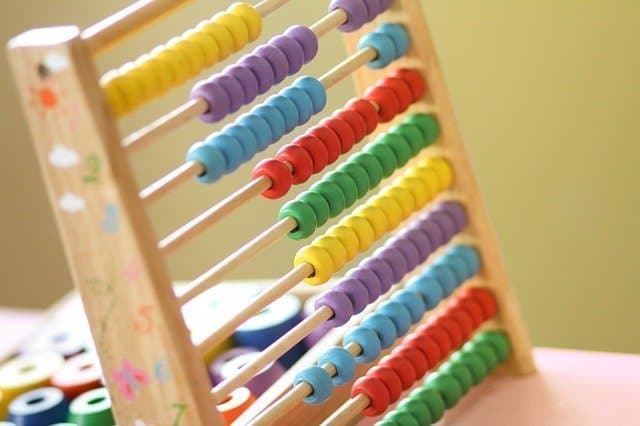Does your child have a fear of math? Is homework time a challenge when math is involved? Here are some great tips on how to help your child become more at ease at math time.
Model your use of math.
You use basic math throughout the day (even though it may seem second-nature.) Rather than completing tasks on your own, think about ways that you may point out to your child the math that you are doing. Rather than simply following a recipe, talk about the amounts needed. When making a list, talk about the number of things that you need. When at the store, think out loud as you determine how much money 30% off really is. Your child will see the many ways that you use math and will begin to see its importance.
Involve your child in using math in everyday situations.
As you go about day to day activities with your child, find ways to incorporate basic math into your conversations. If your kindergartener references at snack time that she has “three grapes left,” explain that she started with ten grapes and ask how many she has eaten. When measuring something, have your child help you and talk about how to use that measuring tool. Incorporating math into daily activities will help your child to see it as something fun that they do with you.
Celebrate at-home successes in math.
When using math at home, either in daily tasks or in homework completion, congratulate your child on his successes. Ask him how he came to his answers and allowed him to explain his thinking to you. This will help him to feel like an expert on the topic while developing his ability to explain his thought processes.
Encourage your child to use multiple ways to get to the “right” answer.
Many current math practices teach students that there are multiple ways to get the correct answer. If your child uses a method that would not be your approach, but gets the right answer consistently, then encourage her to use the method that works best for her. An example would be an elementary student learning the basics of multiplication. You may have learned to make two groups of three (2×3,) but she may have learned to count by 2s. Either method arrives at the same answer, but the approaches are different. If you are having a difficult time understanding the ways that she is learning at school, her teacher can provide you with resources to help you better understand.
Make math fun!
Math doesn’t have to be a series of problems copied onto notebook paper. It can mean setting up a pretend store at home and having your child take turns being the shopper and the cashier. Skills can be practiced through online games and activities. Games can be made out of telling time and announcing when different activities are supposed to happen. Making math fun doesn’t have to take a lot of time and effort. It will, however, help motivate your child to get past their fears and to see how valuable math is.







